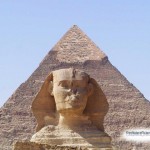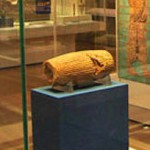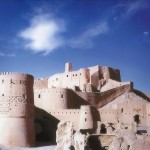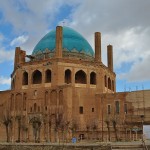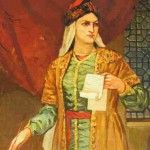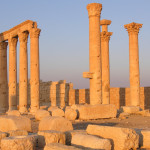 Mr. Hashem Razi, Iranologist, researcher, translator and author of ancient manuscripts, and 80 books is the recepient of the “Personality of the Year 2017”, in the field of “Cultural and Historical Heritage”, for:
Mr. Hashem Razi, Iranologist, researcher, translator and author of ancient manuscripts, and 80 books is the recepient of the “Personality of the Year 2017”, in the field of “Cultural and Historical Heritage”, for:
– His endless efforts in preservation and dissemination of historical and cultural heritage of Iran;
– Publishing the long forgotten works of cultural personalities of Iran;
– Authoring a dictionary of Avesta-ic names for the first time in the whole world;
– Collecting and authoring of an encyclopedia of Ancient Iran, for the first time;
– Collecting and authoring a unique book on ancient Iranian festivities;
– And for his life-long endeavor and efforts to preserve and introduce the historical and cultural heritage of Iran.
***
Hashem Razi Biography
Mr. Hashem Razi , Translator, Researcher of ancient texts and Iranologist was born in 1303 (Iranian Calendar), in Tehran, Iran. He is one of the few acclaimed and distinguished Iranologist (expert in Iranian studies) in the world, who is also an expert in the three ancient languages of Pahlavi, Sanskrit, and Nichi. He is also fluent in Arabic, German, English and French. He was twenty two years old when he published several novels and poetry collections under a pen name (pseudonym). His first serious work on Persian literature was the publication of the Court of Appeal in 1339 (Iranian Calendar).
In the area of religion, his first book was the History of Religions, which were published in seven volumes. The first volume, The Religious System of the World was published in 1342 (Iranian Calendar). He described this collection as “The emergence of philosophy, religion and magic”. In 1344, (Iranian Calendar) his book titled Research in mythology and its relationship with religions was published, and in the period from 1345 to 1348, he continued working on another three titles on religion and culture of Primary Religions until which time SAVAK, the Iranian secret service during Pahlavi era prevented the rest from being released.
Hashem Razi, according to himself, entered the field of Iranian studies in 1342 and in that year he wrote the book, The Great Religions of the World. He says: “I wrote about Zoroastrians first. From that time on, I discovered an extraordinary and great interest in the history, culture, and languages of ancient Iran.
He says: “I was 42 years old when I met Purdavood and Dr Farah Washi. In the same years, it was probably possible that the World Congress on the Mehr of Iran was held in Iran, and I published the book, Avesta Culture, which I compiled in three volumes, with the encouragement of Professor Purdavood. During that time, professors Lentes and Ramps had come to Iran from Germany and encouraged and praised this work and wrote an introduction to it. That book was Razi’s first major work in the field of Iranian studies.
By 1356 (Iranian calendar), Razi was no longer working on psychoanalysis and is completely focusing his efforts on Iranian studies and studying Avestan, Sanskrit, and Ancient Farsi and was teaching about his research in Iranology.At that time Dr. Farah Washi also encouraged Razi to work on the translation of two major books by Franz Cummin.
One of the most important books by Razi is his book, Wisdom of Khosravani. About this book, he says: “In this book, the mysticism and wisdom of Zoroastrians and the relevance to the era of Suhrawardi and comparative studies from the most extensive Iranian landscapes to Sabzevar mullahs in the cultures of Greece, Rome and the Islamic world, have been compared and measured and I’ve provided a lot of documentation.”
Razi writes in the introduction to the book: “Illuminationist wisdom is crystallized in the hymnal songs and the message of Ancient Iran, and because of the precise and wonderful art and the mirror that is decorated and crystallized, it has been shining and seen from time to time.Iranians in the field of philosophy, wisdom, mysticism, mathematics, astronomy, poetry, painting, etc. have been trained to find diversity and breadth through the search for only a few surviving from ancient times.A language such as Rudaki, and the oldest Persian interpretations of the Holy Quran and the dates of the fourth to sixth centuries indicate that, in addition to the thousand years of history, there must be such a stable and functioning language that has come to the forefront. (It is this language that) Of the thousand and thirty, it is still understandable and accessible to all. “
He then goes on to say: “Suhrawardi’s work in philosophy and wisdom is the same path of the ancients. The philosophy of illumination, the wisdom of Fahlvion, the Khoshrani, the immortal goddesses (Hakmah al-Khaleda), and the companions of light. Suhrawardi is among the circle of this striking chain. The first is not before him, and after him he has continued to be Seyyed Haydar Amoli and Hajj Molha’adi of Sabzevari.” On the other hand, the references and descriptions of Suhrawardi and his followers of Khosrowan wisdom, and metaphors and curses about light, fire, Amishaspandan, the emergence of plurality, Cairo’s altar, avalanches, or first exodus and myths … They themselves illustrate this principle. “He then acknowledges that” when he was engaged in research in the wisdom of illumination, “it was possible to obscure the obscure nature of the translation of the poetry of Zoroastrianism (gathers), which was very difficult, according to Suhrawardi’s references and descriptions the background and the work of translation, Razi’s research was based on the same research that was needed to collect the required documents and, of course, the outcome was Razi’s book Wisdom of Khosravani.
Among other important books of Hashem Razi is “Iranian religion and culture before the Zarathustra”, a book that deals with the early history of Iran, before the Achaemenids and the Achaemenids. The ancient religion of Iran and the usual methods of religion and worship, before the advent of Zoroastrianism, are among the topics discussed in this book. In the first part of the book, the natural conditions and the social and cultural life of the first inhabitants of the Iranian plateau have been studied from prehistoric times to the arrival of the Aryans in Iran. The second part is devoted to the entry of Indian and European elements, their culture and civilization. The topic of the third part is the entry of Iranians onto the Plateau, the social and economic system and religion and their rituals in that period. In the fourth part of the book, Razi focused on the rise and fall of the Median kingdom and in the fifth part of the Book he wrote about the Achaemenid Empire in Iran. The final section of the book is dedicated to the study of “the Place of Vandidad” in the Sasanian Avesta and the Shadows of the Former Gods. “The Faith of Moghan” (a research about Iranian religions) is another of Hashem Razi’s books about ancient religions in Iran, and he criticized the ancient religions of Iran using the classical Greek, Roman, Avestan, Pahlavi and Zoroastrian Farsi.
Razi has been the first person who has cited the writings and research by the historians of the ancient world about Zoroastrians, Avesta and other Iranian religions. In the book, many issues have been raised and discussed about the “Zerwani”, “Mitra’i” and Maniwi religions, and their relations with the Zoroastrian religion as well as their influence on each other.
Other good books by Hashem Razi are his “Fire Festivities”, a study about the world’s fire festivals and the traditional ceremonies of Zoroastrians and Persians.The book is arranged in two separate sections; the first part after a brief discussion about how the publication of the Seal of Mehr in the West was done by way of the celebration of Mehregan during the Achaemenid and Sasanian times.Various ceremonies and traditions and rituals, which in many cases are the same as Nowruz, have been discussed.At the end of the book the section on Yalda’s night, the ancient Iranian celebration of the longest night of the year memory, is interesting and readable.
One of the most important works by Razi is the book of Avesta. The list of his books is included below.
Hashem Razi is one of those extraordinary researchers whose work, writings and research have made way for many to love Iranian culture and history.
– Some of his works include:
- Encyclopedia of ancient Iran
- History of Religions (25 volumes). Hashem Razi Tehran. Solar 1343 (has published seven volumes so far).
- Great religions of the world. Hashim Razi. Foruhar 1360
- Vendidad (translation, description, glossary in 2 volumes)
- Vendidad (translation, description, glossary in 4 volumes)
- Treasure Avesta
- History of studies of Iranian religions
- Prophecy and Mahdism,
- Tutorial Avestan language and language
- Avestaic grammar
- Ancient Persian
- The emergence of psychoanalysis (Freud), Translation
- Future of a thought (Freud), Translation
- The principles of psychoanalysis (Freud), Translation
– The publication of the Jury for the first time in Iran
– The publication of Maragheh’s overseas works for the first time in Iran
– Compilation of the culture and names of Avesta for the first time in the world – 1343
– Compilation and editing of Encyclopedia of Ancient Iran for the first time in the world – 1380
– Compilation of the book of ancient Iranian celebrations for the first time – 1979
– Compilation, editing and translation of more than 80 books.



